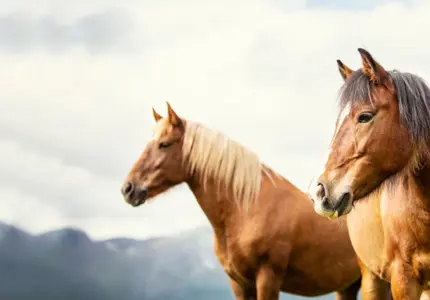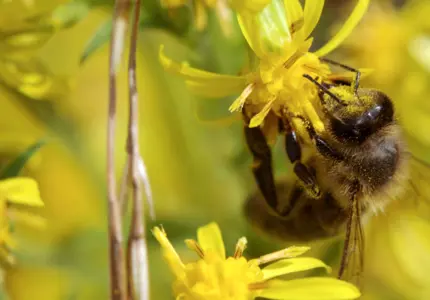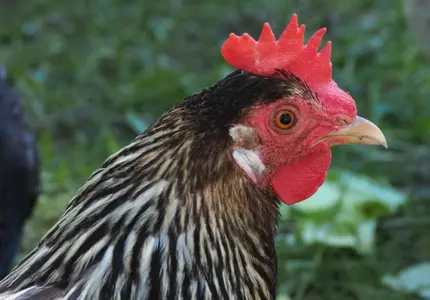
The Faroese sheep
- Home
- Our work
- Farm animals
- Nordic native breeds
- The Faroese sheep
Native name: Føroyskur seyður.
Carcass weight: 20-40 kg (rams), 20 kg (ewes), 15 kg (autumn lambs)
Live weight: 90kg (rams), 55-60kg (ewes), 30-50 kg (autumn lambs).
Wither height: NA
Appearance and colour: Rams have horns, and approximately 2/3 of ewes are naturally polled. White, grey, light and dark red, chestnut, brown and black and a mixture of those colours.
Breed type: Meat and wool production.
Number of offspring: One lamb per ewe.
Birthweight: ~4 kg Number of breeding ewes in Faroe Islands (2025): ~ 75,000.
Not at Risk – Vulnerable – Enangered – Critically Endangered – Extinct

Short background
The Faroe Islands are home to a single native sheep breed - Føroyskur seyður (the Faroese sheep). These sheep have adapted remarkably well to the harsh climate and poor soil conditions of Faroe Islands, where other flora and fauna often struggle. Throughout history, sheep have been one of the main pillars of Faroese society. The name Føroyar (Faroe Islands) derives from old Norse “Færeyjar”, which directly translates to “sheep islands”. The old Norse name of the islands, “Færeyjar”, was given by the Norse settlers during the Viking Age, reflecting the central role of sheep in Faroese life. Sheep have been highly embedded in the islands’ culture since the time of settlement. The oldest known law on the islands is a royal decree called “The Sheep Letter”. This law was established by Earl Haakon (later King Haakon of Norway) in the late 13th century and was passed by the Thing (parliament) in 1298. It functioned like a constitution, with its primary focus on regulating sheep husbandry. Today, sheep still play a vital role in Faroese society, outnumbering humans on the islands: approximately 70, 000 sheep to 54, 000 people .
History and origin
The origin of the Faroese sheep breed is believed to trace back to animals brought to the Faroese Islands by Norse settlers during the Viking age. While recent archaeological findings suggest that the Faroe Islands may have been inhabited as early as the 5th century, the identity and timing of the first settlers remain uncertain. What is clear, however, is that sheep have been the primary source of food among domesticated animals since settlement began. Early topographical texts from the first known settlers describe the Faroe Islands as “full of sheep”, indicating that sheep were already present before 825 A.D. Norse settlers later introduced additional sheep during the Viking age—and throughout history, sheep have played a key role in sustaining life in the Faroe Islands. The sheep population was later blended with Icelandic and Scottish sheep to improve the numbers after large stock decreases during the 17th century.
The Faroese sheep, belong to the Northern European short-tailed group and are most closely related to Norwegian Spel sheep and Icelandic sheep. It is a small and hardy breed with a light, yet strong bone structure that is well adapted to the steep and rugged terrain of the Faroe Islands. Faroese sheep are seasonal breeders, typically producing one lamb per season. Unlike many other Nordic breeds, the Faroese sheep usually graze freely in small groups all year. These small groups consist of around 10 animals (where one sheep is the leader of the flock) that establish different grazing territories on pasture. These territories are maintained by the sheep for several generations and keeps borders between outfield pasturelands without the need of fences.

Uses and important characteristics
The Faroese sheep are primarily raised for meat production, with wool playing a secondary role. Sheep meat is a cornerstone of the Faroese diet and is. prepared in various ways; most commonly dried or fermented, and to a lesser extent, served fresh . Every part of the sheep is utilized and valued. A traditional preservation method, known as ræst, involves hanging the carcass in ventilated shed or drying house, where it is exposed to cool temperatures, high humidity, and salty ocean winds – a practice deeply rooted in Faroese culture . Wool also holds cultural significance. Historically, Faroese wool was one of the islands’ main export goods and remains highly valued by locals. This appreciation is captured in the old Faroese proverb “Ull er Føroya gull”, which translated into “Wool is Faroese gold”.
Conservation
Búnaðarstovan - The Agricultural Agency of the Faroe Islands – is the governmental body responsible for overseeing agricultural affairs across the Faroe Islands. Its duties include managing public land tenancy, supporting agricultural research and development, and administrating public grants to the farming community.
Characterisation in science
There are only few easily accessible characterisation studies on Faroese sheep. Most existing research focuses on socio-economic aspects, or on landscape management and grazing practices that support environmental biodiversity. A handful of studies have also examined Faroese wool from historical or evolutionary perspectives. The most recent studies have investigated possible genetic variants for fecundity within Faroese sheep population, and the genetic relationship Faroe sheep with other breeds. Expanding research efforts could deepen our understanding of the breed both genetically and in terms of its ability to thrive in the harsh conditions of the Faroe Islands.

References
Búnaðarstovan - https://www.bst.fo/um-stovnin/english.
Brandt, J. (1987). E regional analyse af bæreevnens udvikling i de færøske hauger. Fródskaparrit. 33, 19-41.
Brandt, J. (2021). The Faroese Commons and the biodiversity and sustainable development agendas. Landscape Research, 47(6), 735–751. https://doi.org/10.1080/01426397.2020.1862773.
Brandt, L.Ø., Tranekjer, L.D., Mannering, U. et al. (2011). Characterising the potential of sheep wool for ancient DNA analyses. Archaeol Anthropol Sci, 3, 209–221. https://doi.org/10.1007/s12520-011-0055-2.
Christiansen, C.A., (2004). A reanalysis of fleece evolution studies. Acta Archaeologica Lodziensia, 50(1), 11-17.
Curtin, L., D’Andrea, W.J., Balascio, N.L. et al. (2021). Sedimentary DNA and molecular evidence for early human occupation of the Faroe Islands. Commun Earth Environ, 2, 253. https://doi.org/10.1038/s43247-021-00318-0.
Hansen, E.K., (2024). Prolificacy in Faroese sheep: a search for genetic fecundity variants. Bachelor Thesis. University of the Faroe Islands. Faculty of Science and Technology.
Hansen, E.K., í Gerðinum, J.I., Våge, D.I. et al. (2025). Faroese sheep expand overall global ovine genetic diversity. BMC Genom Data 26, 31. https://doi.org/10.1186/s12863-025-01319-0
Thomson, A.M., Simpson, I.A. & Brown, J.L. (2005). Sustainable Rangeland Grazing in Norse Faroe. Hum Ecole, 33, 737–761 https://doi.org/10.1007/s10745-005-7596-x.
Verbrugge, L. N. H., Bjarnason, G., Fagerholm, N., Magnussen, E., Mortensen, L., Olsen, E., Plieninger, T., Raymond, C.R., Olafsson, A. S. (2022). Navigating overgrazing and cultural values through narratives and participatory mapping: a socio-cultural analysis of sheep grazing in the Faroe Islands. Ecosystems and People, 18 (1), 289–302. https://doi.org/10.1080/26395916.2022.2067242.
Website: https://www.faroeislands.fo/nature-environment/the-sheep-islands
Read more about our other native breeds
-

Nordland/Lyngen Horse
The first known and documented exhibition where this breed participated, was in 1898 at Lyngseidet in Troms. In the 1930s, organized breeding of Nordland/Lyngen horses started.
Read more about the breed
-

The Nordic brown bee
Honey bees are threatened by intensive agriculture, habitat loss and climate changes worldwide and are important to conserve, not only due to their honey production but also due to their pollination services.
Read more about the breed
-

Finnish Landrace Chicken
In 1974, the agricultural advisory agency collaborated with Seiskari and published a call to find remains of the Finnish landrace chicken. As a result, one flock was found in South-East Finland. This family line was named after its geographical location as “Savitaipaleenkanta”.
Read more about the breed